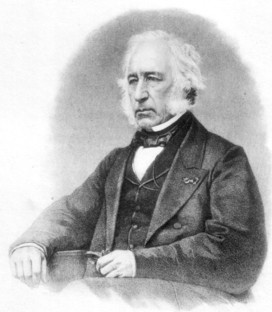On 10th March 1868 the Buffel, a new warship for the Royal Netherlands Navy, slipped into the waters of the Clyde from the shipyard of Robert Napier and Sons.
Robert Napier
Nothing too remarkable about that perhaps: Robert Napier, often described as the “father of Clyde shipbuilding,” had built warships for Denmark, Turkey, and the Royal Navy, as well as passenger and cargo vessels for most of the leading shipping companies of the age including Cunard, the Royal Mail line and P & O. Napier’s fame was great and a reputation for high quality work had won orders from all round the world for his Govan shipyard.
What makes the Buffel memorable is the fact that she survives as the centre-piece of Rotterdam’s Maritime Museum. That Buffel still is afloat after a career of 140 years is a tribute to the skills of her Govan shipbuilders, the careful restoration she received and the loving care with which she is maintained today.
In 1864 the Dutch Government set up a commission to consider the country’s needs for coastal defence. As the Dutch shipbuilding industry at this time did not have the technical capacity or experience to build the type of ships the commission considered necessary the orders for the new ships went to British and French builders; two of them, for the monitor Tijger and the ram turret ship Buffel (the name is Dutch for buffalo) coming to Robert Napier’s yard.
To read the rest of this article please click here.



